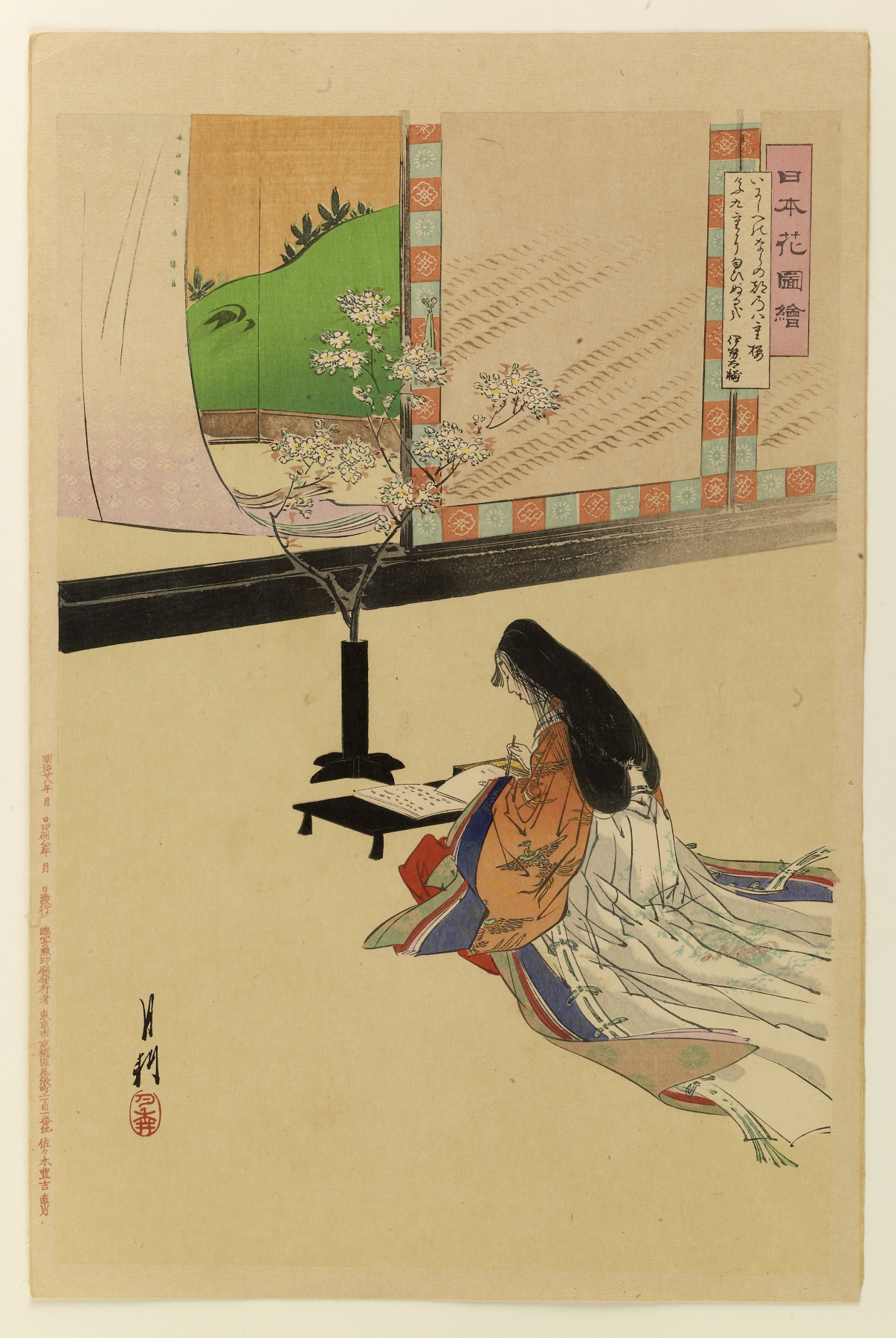Poet Ise no Tayu writing a poem
The Japanese female poet Ise no Tayu (active 11th century) sits with brush in hand at a writing table (bundai) with a writing box (suzuri-bako) beside her. One of the celebrated "Thirty-Six Immortal Poets" selected in the 11th century as models of poetic ability, Ise no Tayo came from a family of scholarly artists whose work united painting, calligraphy, and poetry. The writing implements signify her profession as a poet and as one of Japan's most important female writers. The sprig of cherry blossoms is the central motif in her poem commemorating the relocation of Japan's capital from Nara to Kyoto in 794.
Poem at right:
The double cherry trees, which grew
At Nara in past days,
Now beautify this Palace, and
Their blossoms all ablaze
Perfume the royal ways.
From "A Hundred Verses from Old Japan" (The Hyakunin-isshu), translated by William N. Porter.
Inscription
Provenance
Provenance (from the French provenir, 'to come from/forth') is the chronology of the ownership, custody, or location of a historical object. Learn more about provenance at the Walters.
Mr. and Mrs. C. R. Snell, Jr., Maryland Line, Maryland; given to the Walters Art Museum, 1987.
Exhibitions
| 2011 | The Art of Writing Instruments from Paris to Persia. |
Geographies
Japan, Tokyo (Place of Origin)
Measurements
H: 14 3/16 x W: 9 1/4 in. (36 x 23.5 cm); Framed: 20 1/8 x 15 1/8 in. (51.12 x 38.42 cm)
Credit Line
Gift of Mr. and Mrs. C. R. Snell, Jr., 1987
Location in Museum
Not on view
Accession Number
In libraries, galleries, museums, and archives, an accession number is a unique identifier assigned to each object in the collection.
In libraries, galleries, museums, and archives, an accession number is a unique identifier assigned to each object in the collection.
95.206


